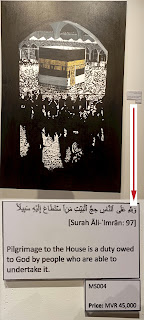No worries.
If you should know, I watched "The Matrix" (the first part) at cinema for 10 times. So, watching "F1" at the cinema again and again and now preparing for the 6th time is no big deal. If that comes to happen, it will tie my record of watching "Titanic" for 6 times at Olympus Theatre in Maldives. Yes, I am not crazy but in a world of madness, it's hard navigating with my sanity intact. That's where my favorite song of all time, Coldplay's "The Hardest Part", comes to save me...
And the hardest part was letting go, not taking part
Was the hardest part
And the strangest thing was waiting for that bell to ring
It was the strangest start
I could feel it go down
Bittersweet I could taste in my mouth
Silver lining the clouds
Oh, and I
I wish that I could work it out
And the hardest part was letting go, not taking part
You really broke my heart, oh
And I tried to sing, but I couldn't think of anything
And that was the hardest part, oh, oh
I can feel it go down
You left the sweetest taste in my mouth
You're a silver lining the clouds
Oh, and I
Oh, and I
I wonder what it's all about
I wonder what it's all about
Everything I know is wrong
Everything I do, it just comes undone
And everything is torn apart
Oh, and that's the hardest part
That's the hardest part
Yeah, that's the hardest part
That's the hardest part





















































